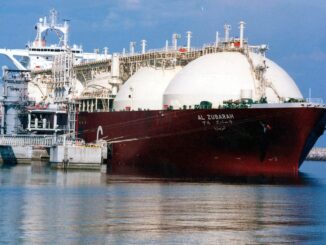
Exactly 60 years ago, the Yom Kippur War of 1973 (October 6 to October 25) started.
In the next 7 years
Crude went from $5 to 50
Interest Rates from 6.5 to 18
Gold from 42.22 to 875Stocks lost almost 50% the following 52 weeks but ended about even after 7 years pic.twitter.com/TowQRXC7Q5
— Gold Trends (@GoldTrendsNet) October 7, 2023
History doesn’t repeat itself, but it often rhymes. On the eve of the 50th anniversary of the world’s first oil crisis, the parallels between October 2023 and October 1973 are easy to draw: A surprise attack on Israel and oil prices rising. But the resemblance ends there.
The global economy isn’t about to suffer another Arab oil embargo that would triple the price of a barrel of crude. Yet, it would be a mistake to downplay the chances that the world faces higher-for-longer oil prices.

The situation is fluid, and for the oil market, everything depends about how Israel responds to Hamas, which launched the attack, and Iran, which typically pulls the strings of the Palestinian group. Still, we can draw a few tentative conclusions:
1) The crisis isn’t a repeat of October 1973. Arab countries aren’t attacking Israel in unison. Egypt, Jordan, Syria, Saudi Arabia and the rest of the Arab world are watching the events from the sidelines, not shaping them.
2) The oil market itself doesn’t have any of the pre-October 1973 characteristics. Back then, oil demand was surging, and the world had exhausted all its spare production capacity. Today, consumption growth has moderated, and is likely to slow further as electric vehicles become a reality. In addition, Saudi Arabia and the United Arab Emirates have significant spare capacity that they use to curb prices – if they choose to do so.
3) As importantly, today, OPEC nations aren’t trying to boost prices beyond a few extra dollars. Riyadh would be content with oil prices rising another 10-20% higher, to just above $100 a barrel from $85 currently, rather than pushing them more than 100% higher to $200 a barrel. Just before the October 1973 oil embargo, OPEC nations unilaterally hiked the official petroleum prices by about 70%. Although the embargo is the element most vividly remembered of the crisis, the price hike was as crucial.
4) The fallout could yet have an impact on oil markets in 2023 and 2024. The most immediate impact could come if Israel concludes that Hamas acted on instructions of Tehran. In that scenario, oil prices could go much higher. In 2019, Iran demonstrated, via Yemeni proxies, that it’s able to knock down a significant chunk of Saudi oil production capacity. It could do the same as retaliation if it finds itself under Israel or American attack.
5) Even if Israel doesn’t immediately respond to Iran, the repercussions will likely affect Iranian oil production. Since late 2022, Washington has turned a blind eye to surging Iranian oil exports, bypassing American sanctions. The priority in Washington was an informal détente with Tehran. As a result, Iranian oil output has surged nearly 700,000 barrels a day this year – the second-largest source of incremental supply in 2023, behind only US shale. The White House is now likely to enforce the sanctions. That could be enough to push oil prices to $100 a barrel, and potentially beyond.
6) Russia will benefit from any Middle East oil crisis. If Washington enforces sanctions against Iran, it could create space for Russia’s own sanctioned barrels to both win market share and achieve higher prices. One of the reasons why the White House turned a blind eye on Iranian oil exports is because it hurt Russia. In turn, Venezuela could also benefit, with the White House relaxing sanctions to ease market pressure.
7) The Saudi-Israeli diplomatic deal, which many had penciled in for early-to-mid 2024, is a casualty. Even if Riyadh is likely furious with Hamas, it’s difficult to see how Crown Prince Mohammed bin Salman would be able to sell the deal domestically. That, in turn, removes the potential for Saudi Arabia pumping more oil to help passage of the deal in Washington. The other victim of the Hamas-Isaeli war is the Saudi-Iranian rapprochement, which itself was another bearish element for oil.
8) Finally, a key difference from 1973, Washington can tap its Strategic Petroleum Reserve to limit the impact on gasoline prices — and on President Joe Biden’s approval rating. If oil prices surge because of tension in the Middle East, the White House is sure to tap the SPR. Although it’s at its lowest level in 40 years, the reserve still has enough oil to deal with another crisis.
Javier Blas is a Bloomberg Opinion columnist covering energy and commodities. He is coauthor of “The World for Sale: Money, Power and the Traders Who Barter the Earth’s Resources.”
Bloomberg
ENB Top News
ENB
Energy Dashboard
ENB Podcast
ENB Substack



